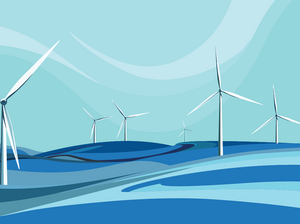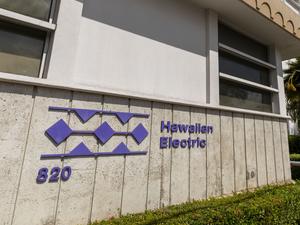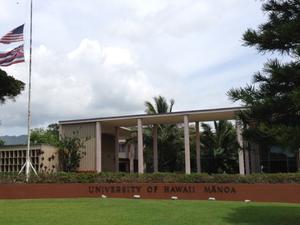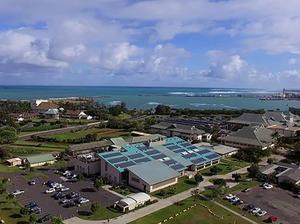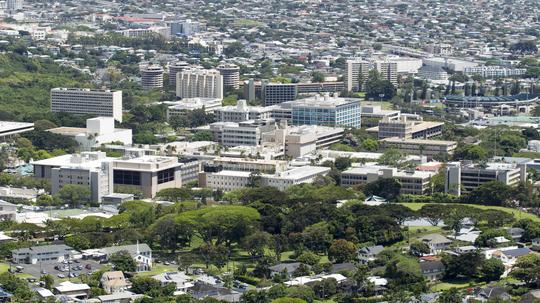
The University of Hawaii system has made some gains in its state-mandated push for 100% renewable energy generation by 2035, but plenty of work remains to get there.
It will take some innovation too, UH Director of Energy Management Miles Topping told state House representatives on Tuesday morning. Topping said UH generated 5.9% of what it consumed in Fiscal Year 2020 — 11.6 million kilowatt-hours of 198 million. That represented an increase of 74% in the share of green generation from FY 2019.
Rep. Gregg Takayama, the chair of the Committee on Higher Education and Technology, asked Topping on the virtual call whether 100% self-produced green power by 2035 is realistic at the compactly constructed Manoa campus, which consumes 80% of power in the 10-campus UH system.
"That is a really good question," said Topping, who paused. "We will not be able to achieve, with this technology, 100% renewable through PV and batteries at Manoa campus. There is just not enough space. So, on-site generation with storage, we can maybe get to 40% or 50%.
“We’re going to have to partner with [Hawaiian Electric Co.] and do offsite [projects] … in order to hit the net-zero mandate.”
In FY 2020, it purchased 2% less power from utilities while increasing its amount of solar generation by 90%. UH pays upward of $45 million a year on electricity bills and achieved a savings of $4.7 million during the coronavirus pandemic. Topping said the savings were not greater because the energy-intensive Manoa campus requires its research buildings to maintain climate control.
Rep. Nicole Lowen, the chair of the Committee on Energy & Environmental Protection, asked why all new UH projects have not fully integrated maximum efficiency and solar generation.
Topping replied that he’s intervened on several contracts to qualify for Hawaii Energy rebates or maximize solar. He said he gets pushback that there’s no budget for those expenses and sometimes efficiency and green generation is the first thing to get cut.
“It just blows my mind that it’s not part of how you build a new building," Topping said. "It’s the most-cost effective to do [at the time it is built]."
UH is discussing a "green tariff" partnership with HECO in which future offsite power generated by the UH system could be delivered by the utility's power lines to the Manoa campus.
The UH community colleges, some of which have the benefit of open land, have made large strides toward full renewable generation, with Leeward Community College and Maui Community College at or approaching 100%, and Windward Community College the lowest at 70%.
There is over 11 megawatts of photovoltaic generation across the UH system, led by UH Maui's 2.85 megawatts.
